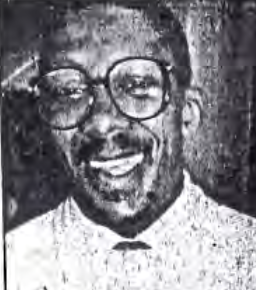 AP Photo On September 27, 1970, two men shot and killed Levi Whiteside during an armed robbery of Talbot Avenue Variety Store in Boston, Massachusetts. Levi Whiteside’s wife, Kathleen, was a witness to the shooting. She described the two assailants as young African-American men, one of whom was wearing a black beret, a black shirt, and green pants. Shortly after the shooting took place, the police arrested 21-year-old Bobby Joe Leaster, whom they spotted standing on a street corner in the vicinity of the shooting. He was arrested because his clothing resembled the outfit described by Kathleen Whiteside. Leaster was an Alabama native who had come to Boston only fifteen months before Whiteside’s murder. Leaster claimed he had been at home with his girlfriend at the time of the murder. Once Leaster had been taken into custody, officers went to interview his girlfriend, Judy Mossoff Clay, to confirm his alibi. With no knowledge of why police were questioning her about her boyfriend’s whereabouts, Clay lied and said she had not seen him all day. As a white woman living with her African-American boyfriend, Clay later recalled that she was scared of being in some sort of trouble when police were questioning her. She later stated that she had “lied to them because of their attitude and because they wouldn’t tell [her] why they wanted to know.” She said that in actuality, Leaster was at home eating a pork chop with her at the time of the crime, so she always knew he was innocent. Kathleen Whiteside initially identified Leaster as the culprit upon viewing him, but when she was asked again later at the police station whether Lester was the shooter, she responded, “I am not sure, I thought it was.” Based solely on Mrs. Whiteside’s identification, Leaster was charged, convicted, and sentenced to life in prison without parole. In 1977, Leaster’s appellate lawyers, Robert and Christopher Muse, became convinced of his innocence and, for nine years, sought his freedom on a pro bono basis. In 1986, they successfully petitioned the Massachusetts Advisory Board of Pardons to commute Leaster’s sentence to second-degree murder, which would have made him eligible for parole. However, before the governor acted on this, an article in the Globe Magazine about Leaster’s possible innocence caused a new witness to come forward. Mark Johnson, a Boston school teacher, revealed that he had seen two men running through a parking lot nearby the store at the time of the murder. He testified that he was positive neither man was Leaster. On the basis of the new eyewitness, Leaster’s conviction was vacated and a new trial was granted. The Boston police conducted a new investigation and discovered that the murder weapon, a gun, was in the Boston evidence lockup. It had been used in an armed robbery and recovered just two weeks after the murder of Whiteside, when Leaster was already was in custody. The gun belonged to Kelsey Reid. On the basis of this new evidence regarding the murder weapon and Johnson’s testimony, Boston prosecutors decided not to seek a new trial and the charges against Leaster were dismissed on December 26, 1986. In 1992, the Massachusetts legislature approved a state-funded annuity, paying Leaster $1,000,000 over the ensuing twenty-five years to compensate him for his years of wrongful imprisonment. – Researched by Dan Curry |